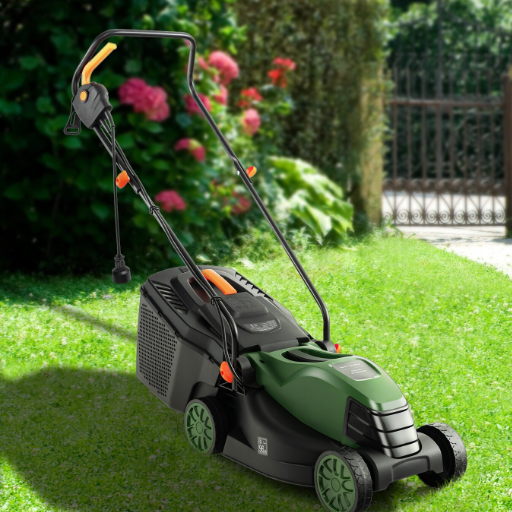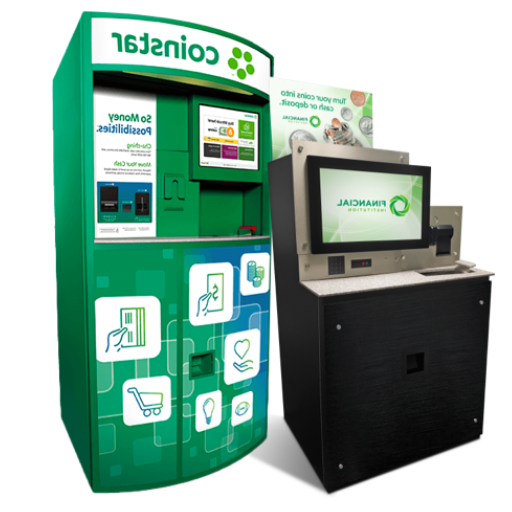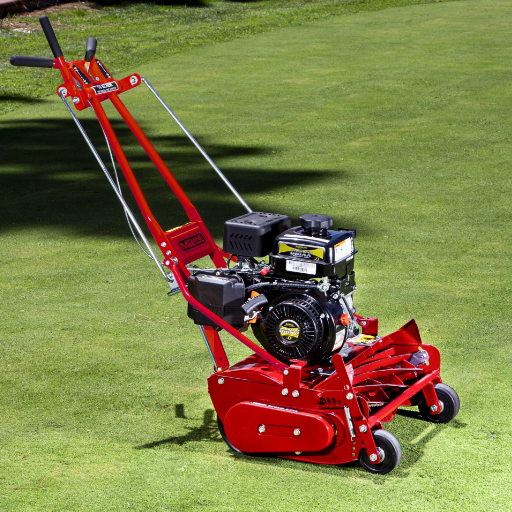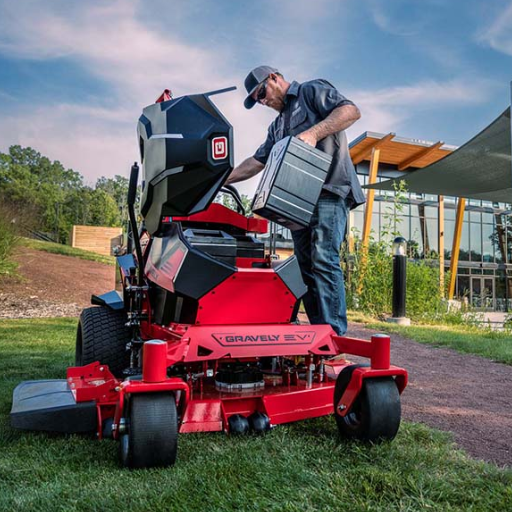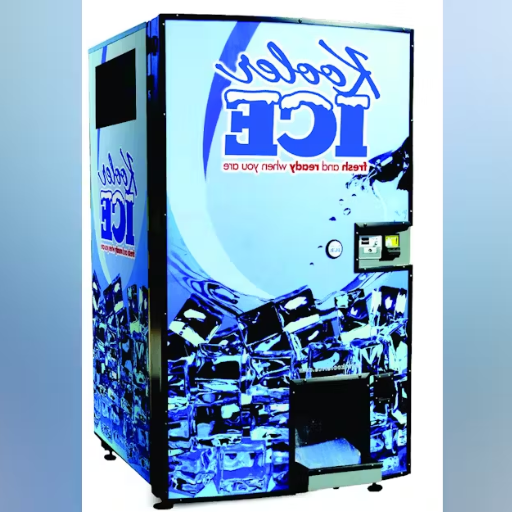In contemporary factories, Automation is at the forefront of modern industrial processes, including the manufacturing, processing, and packaging of goods. From all the innovations improving the production facilities, wrapper machines are mainstay machines to improve productivity and maintain uniformity. These machines facilitate the enhancement of packaging processes by curtailing human involvement, which results in fast-paced production and decreased material wastage. Furthermore, with wrapper machines, it is easier to fulfill the requirements of the high-volume output and guarantee quality simultaneously. This paper examines the lever moving to great productive efficiency, function progression, and overall economic benefit of these wrapper machines in modern production lines.
What are wrapper machines and how do they improve efficiency?

Wrapper machines represent a new category of automated devices that wrap packaging materials like films and papers around particular products for containment and protection. These machines increase productivity by simplifying the packaging process, which dramatically lessens the requirement for manual labor in addition to processing times. The accuracy of these machines reduces material wastage while ensuring consistent quality of the packaging. Additionally, modern wrapper machines can work non-stop, improving throughput. Furthermore, many modern wrapper machines come with programmable features that allow for the customization of different products or sizes, improving the production processes even more.
Understanding different types of wrapper machines
Shrink Wrapping Machines
Shrink wrapping machines encapsulate a product using a plastic film that is sealed through heating and is normally employed in the food and beverage, electronics, and retail industries. The shrink wrap helps to protect against dust, moisture, and tampering, thus preserving the product integrity while in transit or being stored. Their complexity also differs regarding the degree of automation, ranging from manual shrink-wrapping machines to fully automated systems.
Stretch Wrapping Machines
Stretch wrapping machines use a roll of shrink film that can be placed on pallets or other large items. This technique stabilizes loads to ensure they do not shift, break, or get damaged during transport. Variants include automatic, semi-automatic, and turntable-based stretch wrappers, each matched to specific production volumes and operational needs.
Flow Wrapping Machines
Flow wrapping machines seal supplies and products with a continuous roll of plastic film. Some product examples include baked goods, candy, and consumer electronics, and the flow wrap guarantees airtight wrapping. Because of their speed and consistent quality, it is easy to see why the packaging industry relies on these machines for efficiency.
Banding Machines
Banding machines use a thin elastic paper strip to form a band that holds each item closely and securely and handles them as a bulk product. These machines can be used for print products, documents, or any other small items. The banding process is highly efficient in minimizing waste materials and is commonly used where eco-friendly packaging is needed.
Overwrapping Machines
Overwrapping machines utilize cellophane film or a similar material to wrap around a product or a group of products. In the tobacco, confectionery, and pharmaceutical markets, overwrapping enhances the packaging’s presentability and durability. Overwrapping reduces tampering, and the product is visually appealing while being protected simultaneously during transport.
Each type of wrapper machine serves different purposes, but they all reduce the complexity of the packaging process, which in turn enhances productivity, flexibility, and cost efficiency in the manufacturing processes.
Key benefits of implementing wrapper machines in production lines
- Improved Efficiency: Wrapper machines save time in the packaging division by performing repetitive functions, therefore reducing workforce and increasing speed and accuracy in production lines. This increases productivity and reduces time spent on the machine.
- Cost Reduction: Operations are also cheaper as fewer resources are thrown away and fewer materials are used. Less human involvement in packaging lowers the chance of mistakes, thus requiring less money for damage control.
- Enhanced Product Safety and Presentation: Products packaged in wrapper machines are neat and tidy, making them resistant to external factors such as moisture, dust, and dirt, thus improving their safety. In addition, the uniform and appealing designs boost the brand’s reputation and consumer satisfaction.
A comparison between wrapper machines and manual wrapping techniques
Unlike manual wrapping techniques, wrapper machines offer a distinct edge regarding accuracy, productivity, and overall dependability. These machines consistently achieve the finest levels of tension, sealing, and use of materials – manual wrapping is impossible to replicate with such precision. To illustrate, automatic stretch wrappers can preset stretch rates of up to 250% which helps to reduce the amount of film used while ensuring stability of the product itself. This results in considerable savings on packaging materials. Most importantly, wrapper machines are advantageous due to speed as they can handle over 35-100 packages ready for shipment per minute, depending on the wrapper machine model and specifications. On the other hand, manual processes are always limited by the speed and stamina of the operator.
From a technical standpoint, adding devices like precision controls, including PLC (Programmable Logic Controllers) and touch screens, permits the choice of wrapping patterns to suit specific dimensions and weight of the product. This guarantees optimal load prevention of damages to the product during transportation. In sharp contrast, these independent manual operations tend to lack the precision that will produce consistently acceptable wraps that will protect the products. Moreover, machines facilitate the improvement of workplace ergonomics by reducing physically strenuous manual work, which decreases the chances of injury and increases workforce productivity.
Which wrapper machine is right for your business?

Choosing a wrapper machine for your business should consider your operational peculiarities, including the type of products, required pace of packaging, and budget. An automatic wrapper machine with add-ons such as changeable tension and speed controls is suited for operations with high volume and consistent products because it guarantees efficiency. For a business that deals with varied or irregular-shaped products, semi-automatic machines with flexible settings should be sought for. Furthermore, the machine’s sturdiness and care obligations must be considered to achieve reduced downtime and align with long-term operational goals. Finally, emphasizing machines with effortless usability will increase usability and safety in the workplace.
Evaluating fully and semi stretch wrap machines
High-volume operations often rely on automatic stretch wrap machines for unrivaled accuracy and efficiency. These machines operate on the minimum need for human engagement, thanks to features like automatic film cutter and automatic film attachment for effortless wrapping of products. Optional features such as adjustable film tension and programmable wrapping cycles at higher speeds also make these machines favorable for homogenous product loads. Their performance is characterized by a range of technical parameters such as wrapping speed at 30-40 loads per hour, turntable load capacities that often reach up to 4000 lbs, and power pre-stretch film systems. Automatic stretch wrap machines invariably will incur higher costs upfront. However, their increased efficiency and reduced need for human interventions make them ideal for larger businesses.
However, dual-purpose stretch wrapper machines are ideal for businesses with moderate output requirements as they are cost-effective and flexible. Operators of these machines must set the wrapping procedure into motion before the machines start working. Typically, these machines have adjustable load sizes and shapes. Important aspects are, among others, the rotation per minute (RPM) of the turntable (e.g., 10-12), film carriage (manual or powered) settings, and programmable control panels. While these machines are more costly in the long run than automatic ones, the lower maintenance levels and their chance to serve the extensive needs and demands of small and medium-sized businesses make these machines greatly valued. When choosing between the two, consider costs over time, maintenance, product consistency, and functional need.
Considerations when deciding on a wrapper machine
When deciding on a wrapper machine to purchase, examining and defining how the machine’s operating parameters will correspond with the business needs is crucial. The first aspect is the wrapping speed, which depends on the production output. A fully automatic machine is always preferable to a semi-automatic machine for high-volume output operations, as a fully automatic machine will be able to outperform semi-automatic machines that can only function at an average of 15-20 turns every hour. Additonally, consider the kinds and dimensions of loads that are being wrapped. The machines should have adjustable film tension and film carriages to wrap irregular shapes in a firm and uniform manner.
Additional considerations include the machine’s operational cost, maintenance duration, and durability. Machines built using high quality components are more robust, saving you costly maintenance during downtimes. Like before, the ability to adjust the pre-stretch ratio of at least 200% on powered pre-stretch film carriages improves optimal film usage and results in lower wastage. Additional considerations include event-driven program control cycle with predefined load stabilization for enhanced safety measures and better maintenance of operational performance and standards.
Evaluating ROI on Various Types of Wrapper Machines
I focus on several key factors when evaluating ROI for different wrapper machine options. First, I analyze the initial purchase cost in relation to the expected productivity gains, considering variables like load capacity and automation level. Next, I calculate operational costs, including film consumption, energy efficiency, and maintenance requirements, ensuring the machine delivers long-term savings through optimized performance. Additionally, I assess downtime reduction and labor savings offered by features like programmable controls and pre-stretch film systems. By comparing these components, I can determine which machine provides the highest value relative to its cost and aligns with operational goals.
How do stretch wrap machines enhance packaging processes?
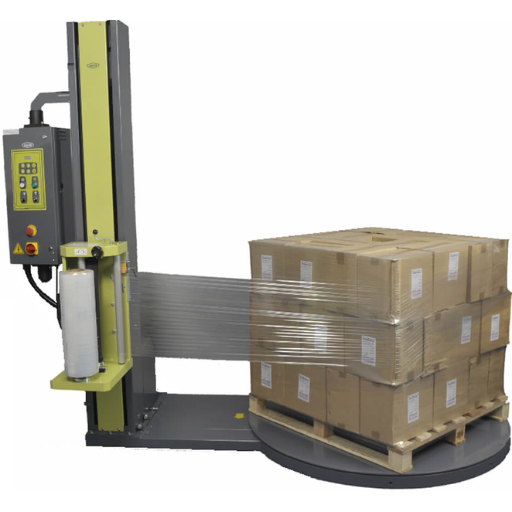
Stretch wrap machines automate stretch film applications, which guarantees, compared to manual wrapping, better speed and efficiency. In addition, stretch wrap machines use pre-stretch technology, which helps save material by maximizing coverage while optimizing film usage. Stretch wrap machines also guarantee assistance in enhancing the load’s stability, safely transiting goods, reducing the risk of injuries for employees, and protecting the workers from too much physical exertion.
Use of stretch film technology towards enhancing load stability
Stretch film packaging is a preferred option because of its elasticity, can conform to the shape of the product being wrapped, and minimizes shifting while in transit. Rough handling of packages during delivery is reduced with the use of stretch film that can bind products onto pallets tightly. With improved pre-stretch capabilities, strength of the film is made stronger to ensure that pressure is distributed uniformly across the load. With the strong pressure applied, shifting, tipping, or collapsing of items are made impossible thus potential damages are eliminated. Furthermore, uniformity in load containment is increased through the stretch film, which guarantees the products are delivered undamaged.
Cutting down on waste materials and expenditure through accurate wrapping
Extensive manual work is eliminated with precise wrapping where material waste and costs are lessened due to stretch film usage per load. The more advanced units utilize film tension control, pre-stretch capabilities, and self-consistency systems to consume as little film as possible. For instance, pre-stretching extends the film to 250-300% length, enhancing coverage while providing sufficient containment. Moreover, the wrap’s tension control ensures that the wrap is neither too loose, which would compromise stability, nor too tight and risk damaging the product. These enhancements aid in deferring unnecessary adjustments and managing repetitive tasks, saving on operating costs while improving the protection of the load being processed.
Increasing throughput with faster wrapping cycles
Increased throughput with greater productivity in demanding conditions is accomplished by automating load sensor integration and real-time monitoring to realize seamless load handling. These new technologies ensure that machinery errors and adjustments do not lead to delays. The best outcome is that business can achieve tight production schedules while ensuring optimum packaging standards. Sensor and machine integration optimizes cycle time on stretch wrap machines. Real-time monitoring, variable speed motors, automated film integration, and programmable wrap systems free a workforce from pursuing other productive tasks. As a result, cycle times are greater, making work less demanding.
What are the key features of modern pallet wrapping machines?

Modern pallet wrapping machines are integrated with sophisticated features that improve productivity and material management and effectively restrain the load. Significant components are flexible pre-stretch requirements for film application encapsulating the load as well as sophisticated automation systems like automatic cutting and film application. Such machines ought to have an embedded memory feature that caters to different wrapping precision levels. In addition, onboard monitoring and self-diagnosing systems can increase operational dependability by reducing downtime and carrying out maintenance in advance. Incorporating safety aids like load stabilizers and emergency stops also increases safety at work during the rapid wrapping of loads.
Enhanced controls and wrap pattern memory
Wrap pattern memory incorporated in advanced machines, along with enhanced controls, significantly improve the versatility and effectiveness of modern pallet wrapping machines. Enhanced controls permit the user to adjust the tautness with which the film is wrapped around the load, and the wrapping speed may be equal to or higher than the speed at which the load is being moved. These features enable effective packaging of different classes of items, including delicate goods. When implemented, these additional features lead to material savings and preserve the wrapped item’s structure, significantly improving operational expenses and productivity.
Integrated conveyor systems for seamless production flow
Integrated Conveyor Systems enhance the Estimation of Delivery Time and streamline the pallet wrapping process by enabling the automated movement of goods through different production stages with a little manual assistance. These systems are designed to function alongside the pallet wrapping machines, thus commencing constant filling and releasing of wraps that aid the elimination of constraints. Integrated Conveyors let product flow be propelled as much as desired. In a nutshell, the systems improve the overall effectiveness, enhance the throughput, and help keep the production line smooth and undisturbed. Moreover, it minimizes the scope of mistakes during the handling of goods along with lessened labor requirements, thus bringing operational reliability and economic efficiency to the enterprise.
Safety features and ergonomic design considerations
Modern and sophisticated machinery for wrapping pallets aid such operations as difficulty of mechanism use, rapid faultless and multi-functional handling, all while ensuring advanced protective features that enable rest harrowing and guarding precautionary measures not to hamper the ease of work. These include built-in smarter sensors and interlocking mechanisms that can monitor and obstructions while the machine is active, stopping if the space is insufficient. Moreover, the Stop button is transferred to a more favorable place for swift activation during unforeseen emergencies when the operator finds themselves in rapid situations of danger. Lift-mounted use control panels can be moved to a more suitable level along with simple operating machines that ease the strain an operator is placed under. Besides these items, other aids of low height cover and unwrapping positioning screws together with automatic looped form wrapping systems allow for free movement that does not require heavy stamina usage thus diminishing the chances of injuries and unease in the workplace. These improvements lead to far more proficient working conditions while ensuring the average person’s effort is low.
How can wrapper machines be integrated into existing production lines?

Incorporating wrapper machines into already existing production lines necessitates careful consideration in the planning phases. The workflow should already be taken into account to ensure smooth optimization. Aspects such as the machine’s capabilites with the existing machines, as well as the wrapping speed about production speed should be scrupulously checked so as to avoid any bottlenecks. The design layout should care for how materials and products flow through the production line and seamless manual intervention. Proactive product handling procedures can be implemented by installing conveyor beacons that transfer wrappers and products to and from the machines. It is important that the coding done on the machine’s control synchronizes well with the upstream and downstream activities to enable smooth communication between them. Following through the listed strategies will enhance productivity while reducing operational interruptions.
Planning for successful implementation and staff training
To achieve successful implementation, it is vital to analyze the production line’s wrapper machine bottlenecks. The goals include seamlessly incorporating the wrapping machine into the existing structure without hindering other equipment operations. Additionally, aligning the machine with all the other components in speed and capacity is equally important. Staff training is just as critical as it is regarding the overall effectiveness of the machine and its troubleshooting capacity. Implementing further measures and training programs will assist in adapting to any changes that can occur.
Tailoring Wrapper Machines for Particular Industry Needs
Various wrapper machines can be modified to suit a specific industry requirement to some degree by changing some of the technological parameters and characteristics which are particular to different operational sets. Some of the factors that should be considered are product size, type of wrap, and desired output speed. For example, using modular component construction and adjustable conveyors is helpful to vary the size of the handled items. The type of wrapping material used, whether polyethylene or propylene, or even biodegradable films, will affect the machine cutting and sealing technologies which must be set to match the material. Furthermore, operating speed is also an essential aspect because modern wrapper machines are designed with different models that are capable of varying throughput rates from 30 to over 200 packages per minute. Meeting these operational parameters usually results in altering some configuration settings. More sophisticated types are likely to be equipped with peripheral devices, such as automated changeover of film rolls, built-in sensors, and IoT devices to measure performance indicators, all for compliance with particular safety and efficiency standards of the relevant industry.
Overcoming Typical Integration Problems
Common complications such as incompatibility, miscalibration, and lack of personnel training management tend to appear when integrating wrapper machines. Compatibility problems may arise when the equipment is not fitted with the pre-existing production processes and systems and either changes or extra parts are required. Calibration issues may cause overwrapping, poor sealing, or a slow production rate, and these problems require meticulous adjustment of the machine settings. In addition, low-quality training can limit productivity as the operators have difficulties using modern machinery, solving problems, and doing other complex operations. As a solution begins with thorough system diagnostics after installation, very detailed tests of calibration, and training of the operators on the additional and modern machines, they will have better understanding of the workflow.
What maintenance is required for wrapper machines?

Regular upkeep on wrapper machines guarantees they will last long and serve their purpose. Maintenance tasks involve cleaning the machine thoroughly to prevent dirt build-up affecting parts of the machine and its productivity. Lubrication on the machine’s moving parts is essential as it helps reduce friction and guarantee efficient functioning. Regularly checking belts, rollers, and sealing components for any wear or tear can help fix problems before they get bigger. Inspecting sensors and other electrical components ensures no interruptions occur during the functioning of the machine. It is advisable to have a flexible maintenance plan focusing on specific machines to minimize disruptions in production and enhance productivity.
Routine maintenance schedules to ensure optimal performance
To achieve enhanced performance, I maintain a routine schedule such as relaying out the necessary changes that need to be made every day. I also check and clean the belts, rollers, and sealing mechanisms for wearing and lacing when they are due. Efforts to ensure that machine parts rub past each other without any friction is conducted every week. On the other hand, sensors, cables, and the entire software platform are assessed on a monthly check-up for any emerging problems. By following these procedures, I can reduce spending downtime while improve productivity.
Most frequently asked questions and how to resolve matters at hand in mere minutes
Mechanical wear and tear is prevalent: it happens when a piece of machinery is being used constantly. Worn-out components like bearings or seals and belts should be replaced immediately to avoid further damage. Another issue frequently arises is electrical faults resulting from broken wires or poor connections. Regular checks and repairs of these connections will guarantee proper equipment functioning. Moving parts that are out of alignment are another issue leading to lowered functionality: these moving parts require realignment and recalibration. If you resolve these issues quickly, you can deal with prolonged outages and fluctuating performance levels.
When to consider replacing or upgrading your wrapper machine
Several essential factors weigh heavily on replacing or upgrading a wrapper machine. For instance, if a machine undergoes unplanned breakdowns that cause the maintenance expenditure to sore, then it is clearly a sign that the machine isn’t worth the investment. Ineffective technology and lack of accessible replacement components indicate that such an upgrade is essential. Furthermore, there are higher chances that an organization may need to migrate to a new model if the production requirements exceed the existing machinery’s capabilities or if newer models outperform the old ones in efficiency, speed, or automation. Paying attention to operational performance and cost will show the correct indicators when determining the time needed for an upgrade or replacement.
Reference sources
Frequently Asked Questions (FAQs)
Q: What is a stretch wrapper and how does it improve packaging efficiency?
A: A stretch wrapper is a packaging machine that applies stretchy plastic film around products or pallets. It significantly improves packaging efficiency by automating the wrapping process, reducing labor costs, and ensuring consistent and secure packaging. Stretch wrappers can handle various load sizes and shapes, making them versatile for different industries and products.
Q: How do automatic stretch wrap machines differ from semi-automatic ones?
A: Automatic stretch wrap machines are fully automated systems that can wrap pallets without human intervention, ideal for high-volume operations. Semi-automatic machines require some operator involvement, such as attaching the film or starting the wrap cycle. While automatic machines offer higher throughput, semi-automatic options are more cost-effective for smaller businesses or lower volume operations.
Q: What are the benefits of using a turntable pallet wrapper?
A: Turntable pallet wrappers offer several advantages in packaging operations. They provide consistent wrapping tension, reduce film usage, and increase wrapping speed. The rotating turntable allows for easy loading and unloading of pallets, improving warehouse efficiency. Additionally, these machines can accommodate various pallet sizes and weights, making them versatile for different shipping needs.
Q: How can a shrink wrap machine enhance product packaging?
A: Shrink wrap machines enhance product packaging by creating a tight, protective layer around items. They use heat to shrink plastic film, conforming it to the product’s shape. This process not only protects against dust and moisture but also improves product presentation. Shrink wrap machines are particularly useful for bundling multiple items together, reducing packaging materials, and creating tamper-evident seals.
Q: What factors should be considered when choosing a pallet stretch wrapper?
A: When selecting a pallet stretch wrapper, consider factors such as production volume, pallet sizes and weights, available floor space, and budget. Other important features include film tension control, pre-stretch capabilities, and wrap patterns. For businesses with varying needs, look for machines with adjustable settings. Additionally, consider the machine’s power requirements (e.g., 110v for more flexible installations) and any specific industry requirements, such as food packaging regulations.
Q: How do portable stretch wrappers benefit small businesses or warehouses with limited space?
A: Portable stretch wrappers offer flexibility and space-saving benefits for small businesses or warehouses with limited floor space. These machines can be moved around the facility as needed, allowing for wrapping at different locations. They’re often battery-powered, eliminating the need for fixed power outlets. Portable wrappers are also generally more affordable than stationary units, making them an attractive option for businesses with lower wrapping volumes or budget constraints.
Q: What is a shrink tunnel, and how does it work in packaging lines?
A: A shrink tunnel is a heating chamber used in packaging lines to apply heat to shrink wrap film. As products pass through the tunnel on a conveyor, the heat causes the film to shrink tightly around the items. Shrink tunnels can be adjusted for different product sizes and film types, ensuring optimal shrinkage. They’re often used in conjunction with shrink wrap machines to create a complete packaging solution for various products, from small consumer goods to larger industrial items.
Q: How can wrapper machines improve shipping efficiency and reduce costs?
A: Wrapper machines significantly improve shipping efficiency and reduce costs in several ways. They ensure consistent and secure packaging, reducing product damage during transit. By optimizing film usage and tension, they minimize material waste. Automated wrapping processes increase throughput and reduce labor costs. Additionally, properly wrapped pallets are easier to handle and stack, maximizing truck and container space. Some advanced machines even incorporate features like automatic labeling, further streamlining the shipping process.
Q: What maintenance is required for wrapper machines to ensure optimal performance?
A: Regular maintenance is crucial for wrapper machines to ensure optimal performance and longevity. This typically includes cleaning the machine regularly, especially components like the film carriage and turntable. Lubricating moving parts, checking and replacing worn components, and inspecting electrical connections are also important. For machines with features like photo-eyes or chain conveyors, these should be cleaned and adjusted periodically. It’s also important to follow the manufacturer’s guidelines for film loading and tension settings to prevent undue stress on the machine.



